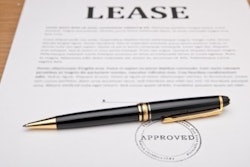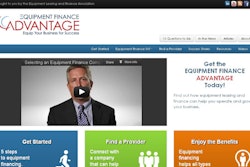With lease financing being used by eight out of 10 businesses in the U.S. today, and accounting for about one-third of new equipment acquisitions, most business owners are generally familiar with leasing. When an improving economy releases pent-up demand for capital equipment, many companies may find their financial conditions not rebounding fast enough to purchase new equipment outright. Executives facing finance vs. cash purchase decisions may not fully know how the strategic use of equipment financing can enhance financial performance and capital productivity. A deeper understanding of the lesser-known points of lease financing, including asset management, tax treatment, insurance and maintenance, and lease options can better enable overall business performance.
Lessons from the Equipment Leasing and Finance Industry
The equipment leasing and finance industry has been managing assets and employing strategies to ensure the most productivity is gained from equipment for more than 40 years. Companies that acquire significant amounts of equipment can learn valuable lessons from the equipment finance industry by reviewing their strategies and programs for efficient asset management. They can be easily adopted by most businesses, especially mid-sized to larger companies.
"Asset management" is a term used since the 1980's that basically means the ability to plan, acquire, manage and recycle assets in a systematic manner. Each stage of asset management has a significant impact on portfolio return and profitability. The asset management function should be employed throughout an asset's entire life cycle from the delivery of equipment to its installation, use, maintenance, and finally de-installation and disposition. Most companies do not employ a formal asset management program. However, equipment finance companies have noted a growing trend among senior managers of companies that acquire large amounts of equipment to seek methods that will reduce their need for additional capital, as well as improve productivity from the current mix of assets. Over the next five years, asset management programs are expected to become standard in medium- to large-sized organizations, and equipment finance companies are being called upon to provide asset management expertise to companies seeking help with their programs internally.
Financial Goals First
Careful consideration of financial goals, such as improving cash flow or meeting a return on net assets, is the foremost consideration of an asset management program. Establishing acquisition guidelines based on equipment needs as well as financial objectives also is crucial.
These goals - different for each organization - should also be factored into the criteria for measuring the performance of a division or business unit.
Businesses would be wise to track maintenance and insurance costs associated with equipment, especially equipment under heavy use. In other words, the question should be asked if it would be cost effective to keep a piece of equipment for an additional year, or incur additional maintenance costs, which could mean keeping it an unsound financial investment?
Also, determine how much growth is expected over the next one to three-year period. This has an effect on the acquisition mix of ownership, renting and leasing. Most businesses grow and change at varying rates. If an organization goes through a sudden growth spurt, having the flexibility to change your asset mix is key. The ability to dispose of equipment no longer needed during slower times also is important.
The amount of flexibility a business requires should be determined in order to help make the decision whether financing or paying with cash makes more sense. Lease financing allows usage of the asset for a set amount of time. The company's needs may fluctuate, so you need to decide what kind and how much equipment is needed. Equipment use and estimated obsolescence should be reviewed in order to help establish a meaningful guideline for future acquisitions. Determine exactly how the equipment is being used and when it will no longer be useful. Financing the asset for that set amount of time may be the wisest investment with a disposal plan in place when the asset is no longer improving productivity, but rather causing a productivity plateau or even decline.
Lease Finance Options
When financing through a lease, the type of lease contracted for has implications for equipment renewal terms and future acquisitions. Unless you have contracted under a master lease, you most likely will need to negotiate a new lease contract for additional equipment acquisitions. If you anticipate business growth that will require additional equipment, you can avoid a new leasing contract by negotiating an option to add equipment under original terms and conditions when structuring a lease program. This helps stabilize capital outlay.
Determination can be made at the outset whether the equipment finance company will handle installation, maintenance and insurance. Though considered value-added services, all are increasingly becoming standards in lease agreements, and are more efficiently, cost-effectively handled by an equipment finance company with core competencies in these areas.
Tax Planning
The business's accountant should be consulted about getting the best mix of lease/loan/own assets on the corporate balance sheet. For instance, under accounting rules, an operating lease is a tax-deductible overhead expense, and lease payments are deducted from corporate income. Also, leased equipment does not have to be depreciated over years.
Equipment Finance on the Leading Edge
Managing obsolescence is a key strategic benefit of equipment finance. While some industries are more sensitive to equipment obsolescence than others, most businesses use IT equipment and are subject to the required updating for the latest technological advances. Again, determine exactly how long the equipment being acquired will be considered useful and productive to the organization. Financing allows the upgrading of equipment without having to manage disposal and other ownership burdens. The risk of getting caught with obsolete equipment is lower with leasing than other equipment acquisition methods.
Equipment Leasing and Finance Association research shows that equipment financing is the option businesses select in about one-third of all equipment acquisition in the U.S. More business leaders are choosing equipment financing for its strategic advantages, such as the reasons discussed above. For further information on how equipment finance may be used strategically, visit www.ELFAOnline.org. You will find a glossary of equipment finance terms, an analysis of the benefits of equipment financing, a directory of equipment finance companies and more.
Kenneth E. Bentsen, Jr. is president of the Equipment Leasing and Finance Association, the premier trade association representing financial services companies and manufacturers engaged in financing the utilization and investment of and in capital goods. For more information, please visit www.ELFAOnline.org
©Equipment Leasing and Finance Association 2007. Reprinted with permission.

















